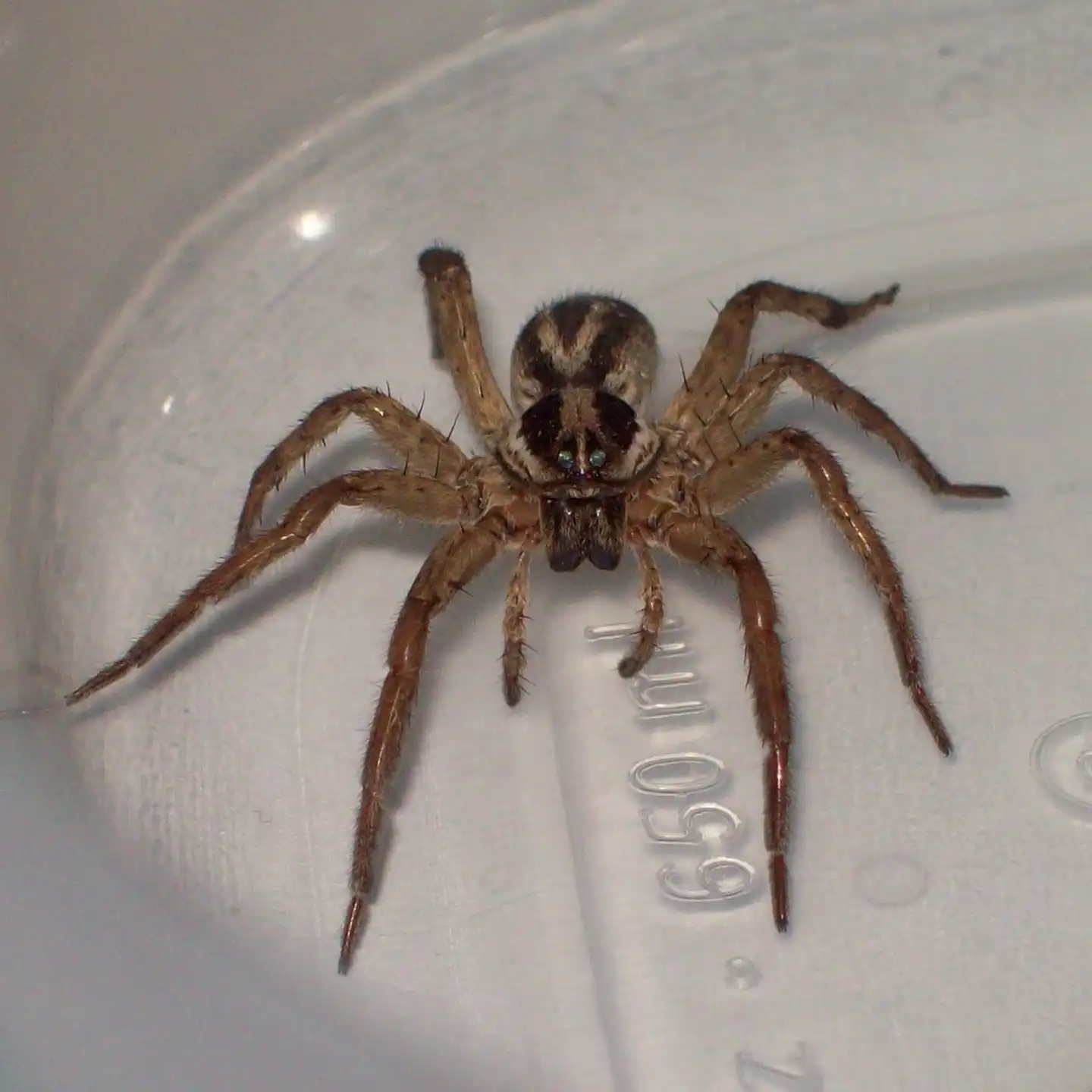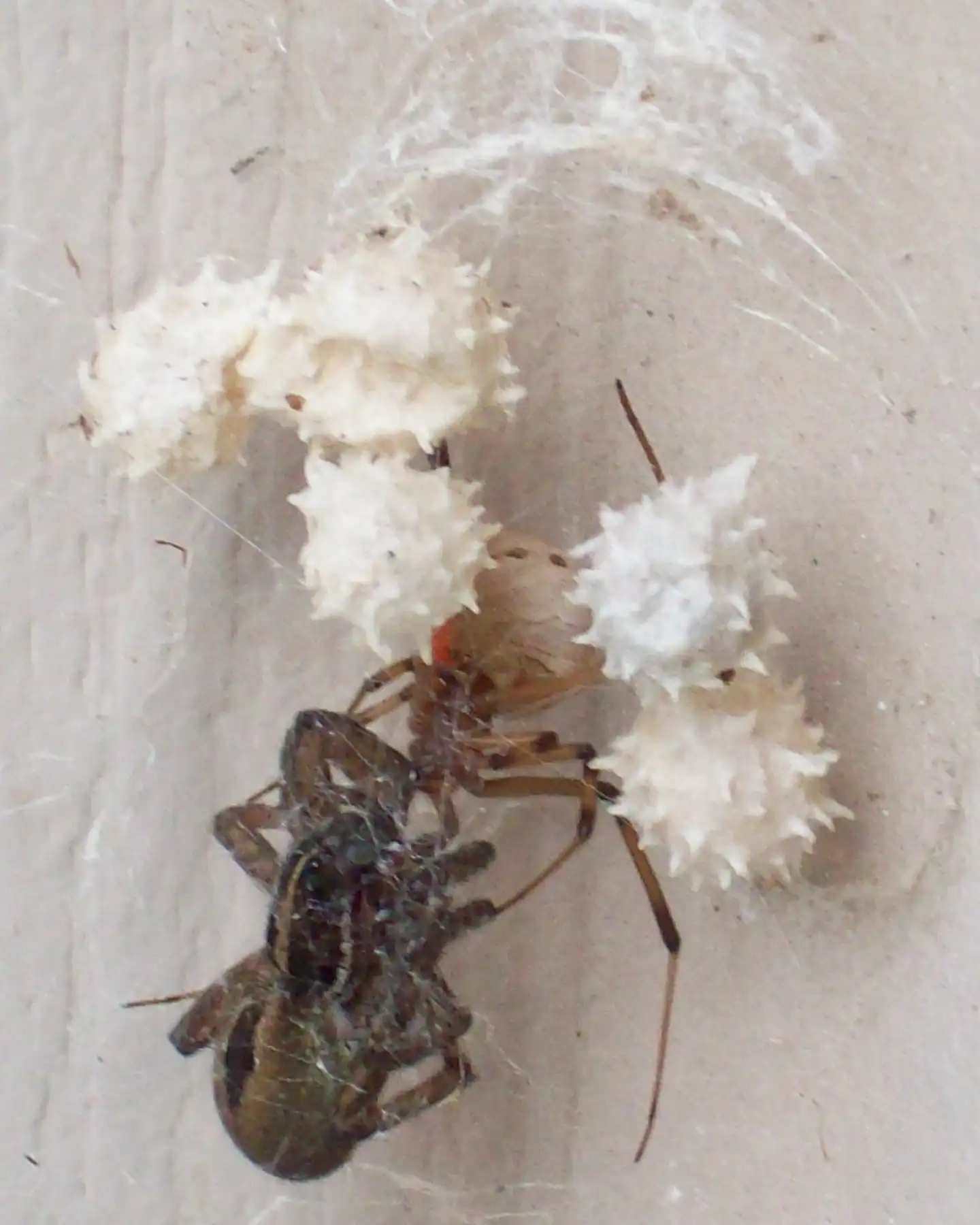The Wolf Spider
The wolf spider is a member of the Lycosidae family, the order Aranedia. There are around 125 species that are found in the United States, and about 50 species that are found in Europe.
 A full grown wolf spider is typically half an inch to two inches long; they are usually brown or gray with various stripe-like markings on their backs. They are also very hairy. The markings are sometimes called Union Jack Impressions.
A full grown wolf spider is typically half an inch to two inches long; they are usually brown or gray with various stripe-like markings on their backs. They are also very hairy. The markings are sometimes called Union Jack Impressions.
Wolf Spiders & their Eyes
The eye arrangement of the wolf spider is one of its most interesting features; they have four small eyes in the bottom row, two large eyes in the middle row, and two medium eyes in the top row.
They received the name wolf spider due to an early belief that the spiders would actually hunt their prey in a group. Some other names for the wolf spider are the ground spider and the hunting spider.
 In the image above, you can see a wolf spider that was caught and killed by a brown widow spider.
In the image above, you can see a wolf spider that was caught and killed by a brown widow spider.
Wolf spiders do not actually make webs; they hunt for their meal. They make homes by digging holes or living under rocks. The wolf spider will often cover the burrow with leaves or grass. They are most commonly found throughout Australia.
The wolf spider is often found in the home at the beginning of the fall season. This is because they are looking for a warm place to live throughout the winter season.
The wolf spider would most likely be seen running across the ground during the daytime. They search for their prey during both day and night. They have both excellent vision and touch. However, because the wolf spider is known as shy, it will quickly run away if it’s disturbed.
The mother wolf spider usually carries her egg sacs with them, which can tend to be on the large side. After they hatch, the newborn spiders ride around on their mother’s back until they are about halfway grown.
Wolf Spider Bite
Even though the wolf spider is poisonous, its venom is not lethal. The wolf spider is not known to be aggressive; however, they will bite if they feel in harm or danger. They also move extremely fast when they are disturbed.
You should seek medical attention or at least the advice of your doctor if bitten by a wolf spider or any other spider. If a wolf spider bites, the wound should not be bandaged, but an ice pack should be placed on the bite so the swelling will go down. And if necessary, the victim should avoid any movement if possible.